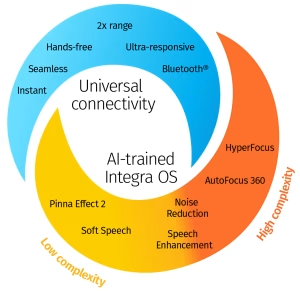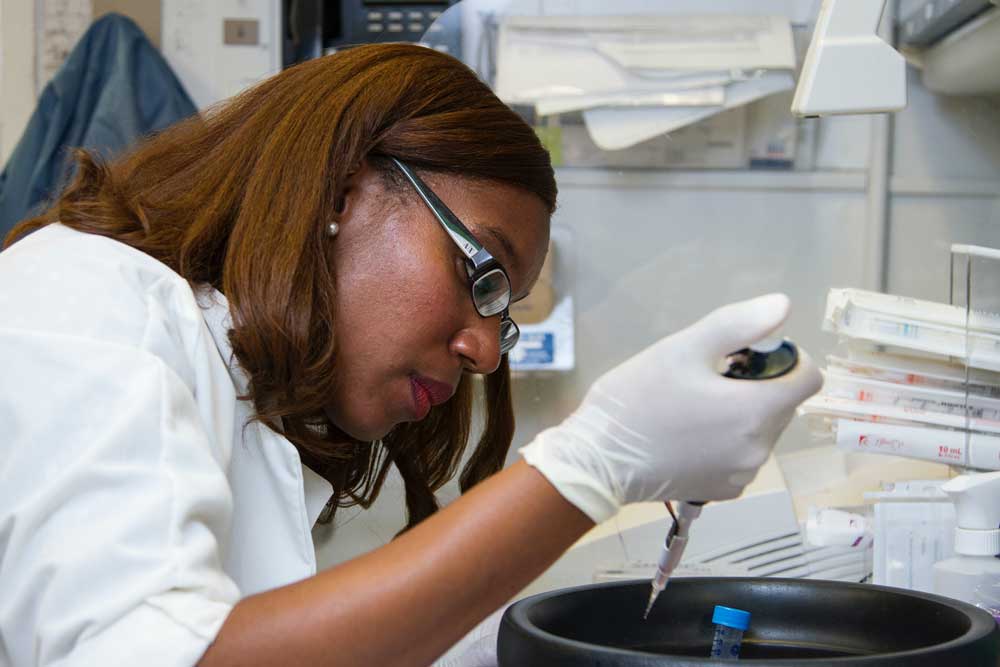

As we all know hearing problems are common and can happen to people of any age. More than half of adults in their 70s have trouble hearing and 80% of 80-year-olds have hearing loss. This can make people feel alone, cause sadness, and even lead to memory problems. Devices like hearing aids and cochlear implants exist, but they don’t fully fix the issue. People need better ways to prevent or reverse hearing loss.
Researchers are motivated to delve into the biological causes of hearing loss for various compelling reasons. Firstly, understanding these causes can pave the way for more effective treatments. By identifying the specific mechanisms underlying hearing loss, scientists can design targeted interventions, like gene therapies or regenerative approaches, to restore or improve auditory function. For instance, recent research on gene activation in mice with hearing loss has shown promising results in reversing the condition, opening up possibilities for future treatments.
Moreover, uncovering the biological roots of hearing loss can lead to better diagnosis and prevention strategies. Early detection of hearing problems can be challenging, but by identifying biomarkers associated with hearing loss, healthcare professionals could diagnose issues sooner. This knowledge can also guide the development of preventive measures, such as lifestyle modifications to mitigate risks. Furthermore, investigating genetic factors can help unravel inherited causes of hearing loss, offering insights for genetic counseling and potential gene-based therapies, which holds potential for a more personalized and effective approach to treatment.
In a PNAS research article we reviewed titled Gene Activation Reverses Hearing Loss in Mice, by Authors Elisa Martelletti, Neil J Ingham, Karen P Steel at the University of Washington, Seattle, WA May 2, 2023 studied these biological factors in Endolymph.
A bit about Endolymph:
The endolymph fluid is located within a specific chamber of the cochlea called the “cochlear duct” or “scala media.” This fluid-filled space is situated between two other chambers: the scala vestibuli, which is located above the cochlear duct, and the scala tympani, which is located below the cochlear duct. The cochlear duct houses the essential sensory structure called the “organ of Corti,” where specialized hair cells are found. These hair cells play a crucial role in converting sound vibrations into electrical signals that are then transmitted to the brain for interpretation. The presence of the endolymph in the cochlear duct is vital for maintaining the proper environment for sound transduction and hearing.
One main reason for age-related hearing loss involves a special fluid called endolymph. This fluid has a lot of potassium and less sodium. It covers the top of hair cells in the ear and helps us hear. In the cochlea, this fluid has an important electric charge called the endocochlear potential (EP). When this charge is high, our hearing is good. Hair cells help us hear and keep our balance.
In the PNAS research article by Elisa Martelletti et al. (2023) they found Some mice, called Spns2 mutant mice, quickly lose their hearing because their EP (endocochlear potential) drops. The EP gets very high in the beginning for these mice, and then it drops, causing hearing problems. Researchers wanted to know if they could make the EP go back up and fix the hearing loss. Therefore, they gave these mice a special medicine called tamoxifen, and they did this when the mice were around 2 to 4 weeks old. They checked the mice’s hearing using special tests before and after giving them the medicine.
Tamoxifen is a medication that is primarily used to treat certain types of breast cancer. It works by acting as a selective estrogen receptor modulator (SERM), which means it has complex effects on estrogen receptors in the body.
Interestingly, tamoxifen apparently has been explored for its potential effects beyond cancer treatment. In this case, it has been used experimentally to activate specific genes or pathways, such as in the study involving hearing loss in mice. The specific mechanisms behind these effects can vary and are still being studied.
Note: It’s important to note that tamoxifen is a powerful medication with potential side effects and risks. Its usage should always be under the guidance of a qualified healthcare professional, especially because it’s primarily used for treating cancer.
The scientists found that the hearing loss in the Spns2 mutant mice could be reversed by turning on the Spns2 gene. The mice’s hearing improved when they did this. This idea might not work exactly the same in humans, but it suggests that increasing the activity of a certain gene could help people with hearing problems. They also noticed that the sooner they turned on the gene, the better the mice’s hearing got. This tells us there’s a critical time period to fix hearing loss.
You might be wondering why this matters. Well, even though this study was done in mice, it shows that one type of hearing loss can be fixed. Also, because there are many mice with similar issues, this method might work for other problems too. Diseases that were thought to be impossible to treat might have some hope now.
So, in short, this study found a way to reverse hearing loss in mice by activating a certain gene. This gives hope that similar treatments could work for humans and other diseases too.
In conclusion, the pursuit of understanding the biological causes of hearing loss is a critical endeavor with far-reaching implications. As we continue to unravel the intricate mechanisms underlying this condition, the potential for groundbreaking advancements in treatment, diagnosis, and prevention becomes increasingly evident. The encouraging results from studies like the one on gene activation in mice with hearing loss emphasize the importance of ongoing research in this field.
The journey towards effective interventions for hearing loss is far from over. With an expanding body of knowledge and growing interest from the scientific community, we can anticipate a wave of further research and exploration into these topics. As new discoveries emerge and innovative techniques are developed, we’ll be keeping a close eye on the evolving landscape of publications, eager to witness the transformation of scientific insights into tangible solutions that could significantly improve the lives of those affected by hearing loss.
Thank you for reading and we promise to report more studies as we discover them.
Cheers
Powered By SinglerDesign.com